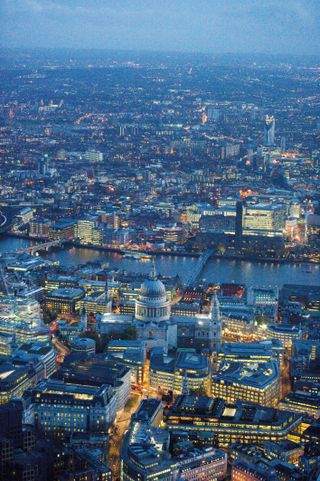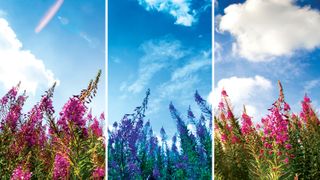Essential Nikon camera settings: 9. ISO

The quality of images taken at high ISOs on current cameras means you can now shoot even when the light levels are low…
What is it in a nutshell?
ISO is simply a measure of how sensitive your camera's sensor is to light - at high ISO settings, such as 800 or 1600, the sensor needs less light to provide a correct exposure.
If you don't increase the ISO in low light, a shutter speed fast enough to shoot handheld might not let in enough light for a correct exposure - increasing the ISO makes the sensor more sensitive, so the limited amount of light provided by the fast shutter speed (in other words, a short exposure) should be enough for a correct exposure.
Why is it so important?
Using high ISO settings used to mean loads of noise, and hence low-quality images, but modern Nikon DSLRs are capable of producing excellent-quality images at much higher ISOs than their predecessors.
This means that you can shoot in lower light while still using a faster shutter speed - perfect for avoiding both camera shake and blur due to subject movement.
However, despite these advances, there is still some drop-off in quality as you increase the ISO, so you should try to keep the ISO at the lowest setting that will still allow you to get the shot.
How do you use it?
When you're shooting in low light but want to use a fast shutter speed, set your SLR to shutter-priority mode to allow you to choose the shutter speed you need to freeze any movement. Now point your camera towards your subject and check whether the aperture display is constantly lit or flashing.
Get daily insight, inspiration and deals in your inbox
Get the hottest deals available in your inbox plus news, reviews, opinion, analysis and more from the TechRadar team.
If it's constantly lit there's enough light to start shooting, but if it's flashing then you need to increase the ISO until it's constant.
Flashing indicates that the camera cannot achieve a correct exposure for the lighting conditions, but remember that if the light changes or the subject moves into a darker location, you'll need to watch out for the flashing aperture display again, and change the ISO to compensate.
What you can ignore: Expanded ISO settings
Most Nikon SLRs offer a range of ISO settings above the 'native' highest values. These are known as 'expanded ISO settings'.
These are best avoided in all but the most extreme shooting conditions, as along with increased noise, which shows up in the form of speckles on your photographs, using these settings can also lead to a greater risk of blown highlights and blocked-out shadows, as they often have a lower dynamic range than the normal ISO settings.
Taking it further: Auto ISO
Along with setting specific ISO values, Nikon DSLRs have an automatic ISO option. This is ideal if you want to make sure that the shutter speed doesn't drop too low in constantly changing lighting conditions, leading to blur from camera shake or subject movement.
In this situation you can set the ISO to auto, and in the set-up menu you can choose the highest ISO setting that you're comfortable with.
- Learn more: The A to Z of Photography: ISO
Essential Nikon camera settings: 10. White Balance

Here's how to ensure accurately reproduced colours on your Nikon
What is it in a nutshell?
The colour of the light from different light sources varies from the cool, blue tones of shade under a blue sky to the warm, orange colour of a sunrise or sunset.
The white balance setting on your Nikon allows you to compensate for the different colours of various light sources to make sure that the colours of your shots are accurate (in other words, so that whites actually look white, and don't appear slightly blue or yellow).
Why is it so important?
Even though you can change the white balance when you process your images (as long as you shoot in raw) it's still important to choose the right white balance when you take your shots.
At the very least it means you won't have to waste time changing it when you process your images. In addition, using the wrong white balance can also affect how colours are recorded.
For example, if you're shooting a sunset and use a warm white balance setting, such as Shade, it will boost the amount of orange and red in the shot.
This will shift the histogram to the right slightly, giving the impression that the photograph is over-exposed, whereas with a cooler white balance setting these tones would move a little to the left, so the image would actually be correctly exposed.
How do you use it?
The auto white balance setting on your Nikon can cope with a wide range of lighting conditions, but for more consistent results you can use one of the presets. These presets cover most lighting that you will encounter, including fluorescent and tungsten lighting, but there are some common light sources that don't have their own setting.
The most common is sunlight at sunrise or sunset - in these cases it's best to start by setting the white balance to daylight, and taking a test shot to check that the colour reproduction looks accurate.
What you can ignore: Manual colour temperature
In the white balance menu you can set the colour temperature, rather than using one of the presets. This can give an accurate white balance setting, but to set the colour temperature manually with any precision you'll need to use a colour temperature meter, which are expensive, and unnecessary for all but the most specialised uses.
Taking it further: Custom white balance
To create a custom white balance you need to place a sheet of white or grey card where the subject that you want to shoot is, in the lighting that you want to use. Fill the frame with this card and take a shot, ensuring that it isn't over-exposed.
You can then select the preset manual option from the white balance menu, pick the shot, and the camera will set the white balance to suit the lighting.
- Learn more: 7 things you didn't know about your Nikon DSLR
